Hello all! Stating again for all new subscribers, this is one of my regular cookery book reviews, which came about because of the number of questions I was getting about how to convert recipes from conventional cookbooks. So the main aim of these posts - as well as showcasing books I have genuinely enjoyed cooking from - is to show you just how compatible your cookbook collection is with pressure cooking. If you have a classic/favourite cookbook you would like me to take a look at, please let me know!
There have been a lot of books published recently that I want to talk about, so this post unusually covers more than one and the next couple of book review posts are likely to do so too. I’m starting in the Middle East and will be back there very soon too - there are some truly excellent books from the region about to come out. And I want to celebrate the books of a whole swathe of authors who deserve our support and need to to be able to feel as though they matter, and are heard, currently now more than ever. The UK is a nation of magpies - we are curious and appreciative of new to us cuisines and flavours, but our curiosity and appreciation does not often enough extend to the people with whom the cuisines originate. And I feel very strongly that they should. The richest of cookery books on my shelves facilitate this. They explore histories and cultures and are full of stories, anecdotes, accounts of the people who cook the food. They contextualise and show time and again that real cooking is a human endeavour, common to us all.
A superb example of a book that exemplifies all of this is Lugma, Abundant Dishes and Stories from My Middle East by Noor Murad. Through it I have been exploring the food and cultural landscape of Bahrain. I say the food of Bahrain but it isn’t the full picture because although Noor grew up in Bahrain her food is also influenced by the fact that she grew up with an English mother who cooked just about every cuisine at home except the the food of the Gulf.
Her recipes reflect this - the book is an excellent introduction to Bahraini food and in particular distinctions between Gulf and Levant food (as Noor points out, most of the dishes we in the UK are accustomed to eating from the Middle East tend towards the Levantine), but the mix is much more personal than that, with twists cropping up as you would expect in any part diasporic household. So there are French style crepes flavoured with cardamom and served with a fragrant orange blossom, lime and honey syrup, spiced frittatas, Bombay mix adding crunch to a broccoli and chilli salad, cha’at style, labneh topped with braised leeks and peas, a green lasagne with a yogurt bechamel and lots of feta and halloumi, jacket potatoes with spiced tuna and preserved lemon, a Middle Eastern bolognese, an “Arab Mess” of rosewater meringue with cardamom cream. There is even a Chinese style chilli crisp inspired by flavours of the Middle East - this is particularly good and useful to have at hand to stir or sprinkle onto all kinds of things.
This is a style of cooking I feel a strong affinity with. I love fusions of all sorts when they are well thought out and actually work. I think they often highlight the common ground between us culturally and I love the fact that they are often born out of a need to improvise. Sometimes the best dishes come from combining a familiar process with less familiar ingredients and vice versa. A curiosity leading to exploration, but grounded in what you already know. You see this in every diasporic community throughout the world where comfort is found in something not quite the same, but close enough, and sometimes you might even create something better.
So Lugma is a highly individual collection of recipes which are predominantly Bahraini, or generally Middle Eastern, often with Western twists. What to expect in terms of ingredients? There is a lot of sharp, sour, sweet, smokiness from the citrusses - preserved lemon, dried/black limes - and fenugreek, tamarind and tahini, date molasses, yogurt and labneh. There are well known to us ingredients used in unexpected ways. For example, I am used to seeing toasted rice crop up in spice mixes, but not pearl barley, as it does in Daqoos, a spice mix specific to Bahrain. The pearly barley is combined with cumin, coriander sesame, onion and garlic granules, Aleppo chilli and paprika. What else? As you might expect, an emphasis on lots of herbs, beans, pulses. A whole chapter on rice - which makes perfect sense when you know that the Bahraini word for rice - “aish” - also means “living”. Lots of chicken and lamb. Much of the food is hearty and fulsome - one pot stews, dals, pulse heavy braises, elaborate, multifaceted rice dishes - but there are light touches too especially in the salads and vegetable dishes. I really love the whole range of roast/grilled vegetables which are all so cleverly dressed.
As you can imagine, all of this means it is incredibly pressure cooker friendly and at least 70% of the recipes have at least one element which can be pressure cooked. What did I cook?
Baith oo Tamate: Eggs and Tomatoes.
I’m starting with this very simple dish as it has pretty much revolutionised my breakfasts - I do some version of it at least 4 times a week. Tomatoes are braised in butter to soften, then served with turmeric fried eggs, curry leaves and coriander. I pressure cook the tomatoes - roll them around in the melted butter and add a splash of water if there isn’t much steam and cook for zero minutes fast release. Then I fry the egg in the same pan to save on washing up. When I move away from Noor’s recipe, I might add mushrooms to the cooker with the tomatoes, or warm through some kimchi or yogurt when I’ve fried the egg (I don’t like fridge chill on my eggs) or use whatever herbs I have lying around. It’s brilliantly versatile. Oh - and I’ve tried it with the Daqoos spice mix too - works very well with the sweetness of the cherry tomatoes.
Lemony Vine Leaf Rice
This had instant appeal to me because it is so rare to see vine leaves used other than stuffed and they have a flavour - intensely savoury and slightly mouth-puckering - which I really love. This is fragrantly spiced with a sweet tartness to it thanks to mint, pomegranate molasses and pomegranates. It uses Egyptian rice - a medium grain rice so you can substitute with similar if you can’t find one that specifically says Egyptian - which takes 4 mins at HP. I fast release as this is a slightly wet dish. And incidentally, take Noor’s advice on all the other basmati rice dishes and rinse thoroughly and soak to remove as much starch as you can - this will help separate and fluff up the grains. Then 2 mins HP, natural release and some time spent loosely covered by tea towel will give you the best texture every time. Off the heat if you don’t want a tahdig, on a very low heat if you do.
Fasoolia be Lahme: White Bean and Lamb Stew
Proper comforting this, flavoured with bay, garlic, cinnamon and cumin and lots of fresh coriander with acidity from cider vinegar. Noor bakes hers. I pressure cooked for 15 minutes without the already cooked cannellini beans and then for another 5 with. The beauty of pressure cooking is that if you wanted to use soaked dried beans, you could cook it all together for 20 minutes. As it is meat, always natural release.
Cauliflower Mutabal
This is usually made with burnt aubergine, but here we have a tahini rich, lemony cauliflower dip which is similar in flavour profile to hummus but with mint and parsley, and much quicker as you are not cooking chickpeas. You can pressure roast the cauliflower - sear, splash of water, up to HP, then as it is for a dip and you want it fairly soft, 30 seconds before fast releasing.
Moving on to another couple of books I’ve really enjoyed recently -
Ferment: Simple Ferments and Pickles and How to Eat Them - Kenji Morimoto
Including a book on fermentation in a pressure cooking newsletter might seem a bit of an odd one, but bear with me! As anyone who has bought my books/followed my work for any length of time will know, I love all forms of preserving, and especially fermenting. Writing books such as Leaf and Citrus allowed me to devote a fair bit of time to this - to the extent that I will aim to always have certain things in the fridge, gently and slowly fermenting away, gaining depth of flavour as they do so - there will be lacto fermented wild garlic, enough to last a year, a mandarin version of yuzukosho, kimchi and sauerkraut, preserved citrus… So I don’t come to fermentation as a novice.
BUT what I love about Kenji Morimoto’s book is how easy he makes everything and how well it all works. I am using his kombucha method as a aide memoire in place of those supplied by the place I bought my SCOBY, and I am lacto fermenting much more than I ever have because the method of weighing vegetables and water in a jar before working out the right amount of salt is so unbelievably simple, taking moments, you can do it in a flash. I find myself doing this to use things up while I am waiting for meals to cook and now always have fermented tomatoes in the fridge along with everything I’ve mentioned above. There is a big section on making your own miso/miso-type pastes, which is where pressure cooking is mentioned, for cooking the soybeans and chickpeas.
What sets this book apart from a lot of preserving books I have is the section on how to use the ferments you have made. There are some very inventive meals here and at least half of them have potential pressure cooker elements. The dishes with mainly Korean twists remind me a little of Edward Lee, one of my favourite American chefs, who combines Korean and Southern American staples so well. Kimchi and miso, kombucha and cheong globetrot through a variety of recipes in a very appealing way. I haven’t tried any of the following recipes yet, but they read very well (and after years of book reviewing, developing and testing, I can pretty much tell) - loads of kimchi dishes, including a shakshuka, a caponata and a kimchi and feta spanakopita with gochujang butter, tuna summer rolls with bread and butter pickles, miso short rib birria tacos with kimchi guacamole…Highly recommend! And also highly recommend following Kenji on Instagram if you don’t already - full of interesting fermentation recipes, some of which didn’t make it into the book.
Finally for today a brief look at -
Dip In: 80 Delicious Dip Recipes for Entertaining, Snacking and Beyond by Sonali Shah
This is a fun one. I love a single subject book - so useful to have a collection of similar themed recipes to dip into (pun accidental, always). Also, who doesn’t love a dip? Again, not what you would consider to be particularly pressure cooker friendly, but of course there are dips containing beans and pulses which can be pressure cooked rather than bought tinned, and plenty calling for cooked vegetables as well. There is a recipe using garlic confit, so you could use my pressure cooker version here if you like. You can use the pressure bake method for Sonali’s whole camembert dip - there is a recipe in Modern Pressure Cooking. And then there are a few cooked dips too which may double up as main meals.
The recipes are globally inspired and a well balanced combination of the very familiar and the less so, the easy to put together and the more elaborate, the snacks you can form from a well stocked store cupboard and the whole meal dips/salads (including an elaborate looking but easy to assemble 7 layer chaat dip!) which might require a bit more planning ahead. In short, something for pretty much occasion. The classics include skordalia, variations on hummus, salsas and mojos, tapenade, romesco, ezme and classic sour cream and onion dip. There is, coincidentally, a version of mutabal (see Noor’s cauliflower version above), this time courgette, which also makes a lot of sense. There are also menu suggestions, something I like to see in a book, even if I rarely follow them they are useful as the author will normally have spent some time thinking it through and coming up with a meal that is varied enough and balanced. Noor’s book has them too.
Back very soon with more recipes. In the meantime, please do like, restack, share with anyone you think might find this post interesting. It is free to all. Thank you so much!

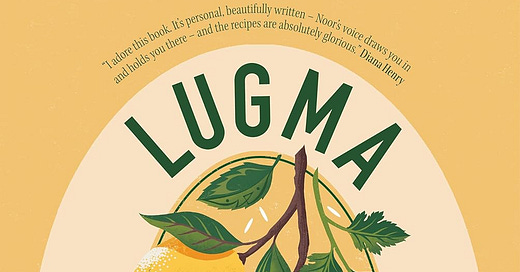



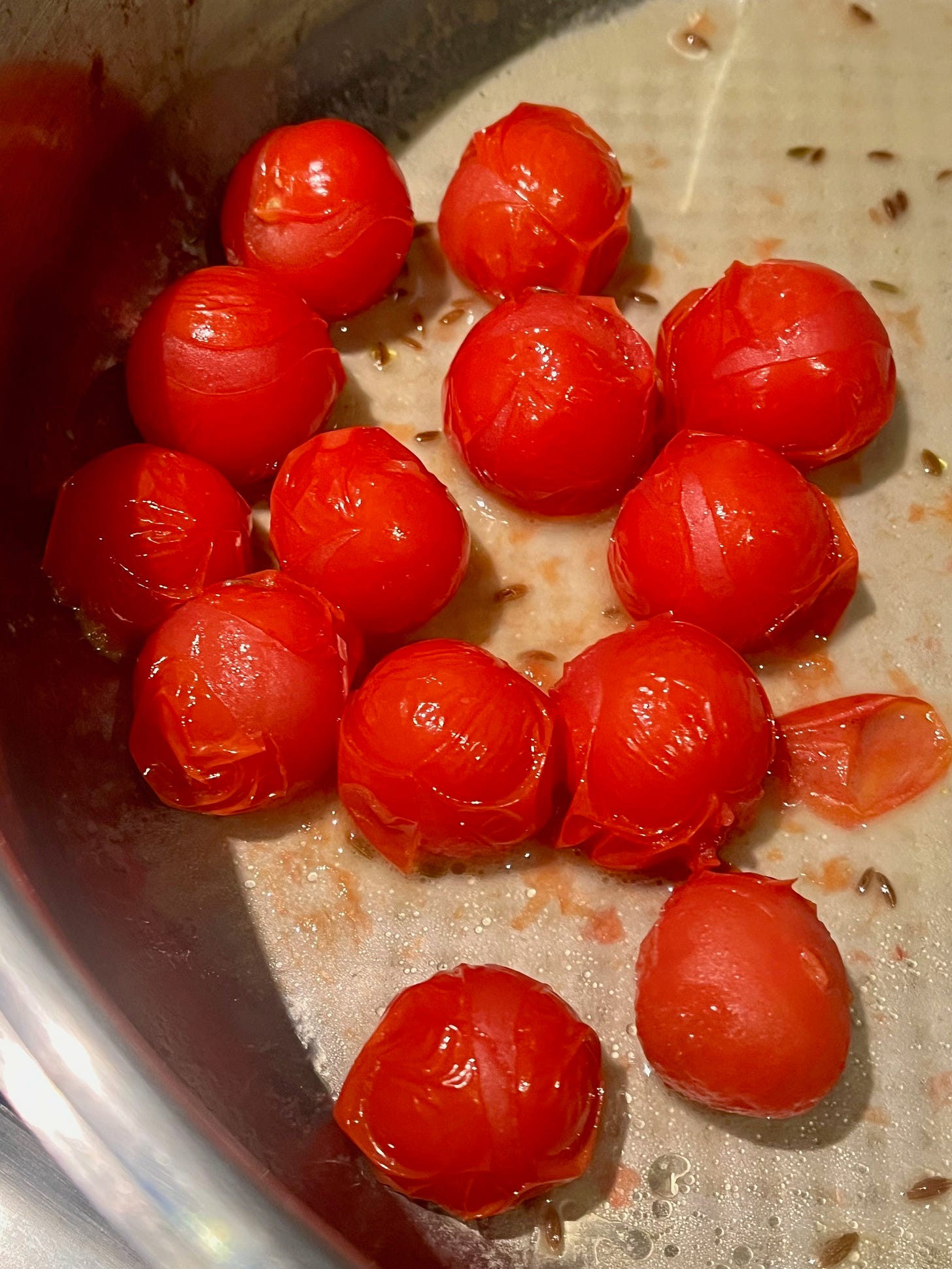
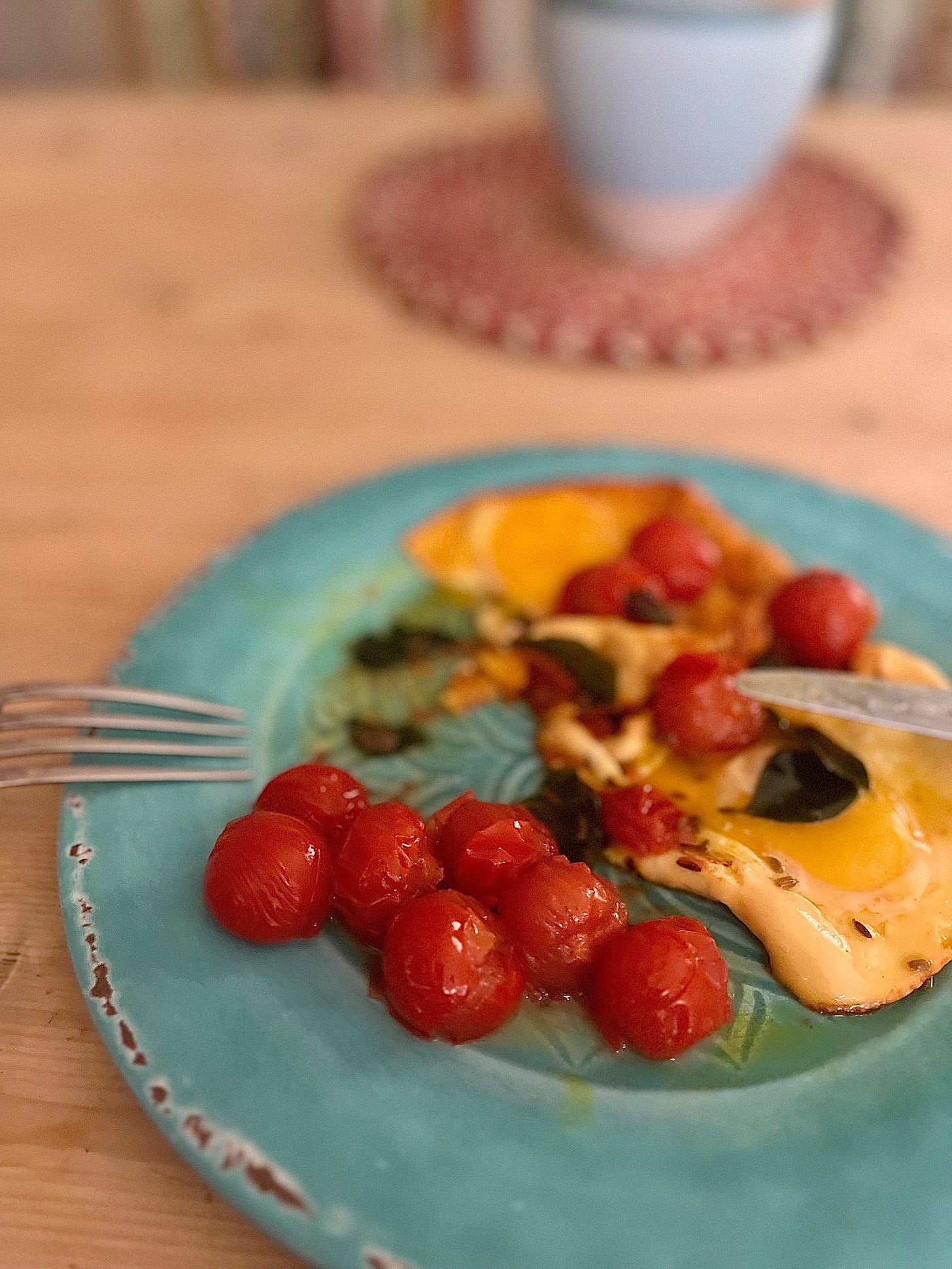
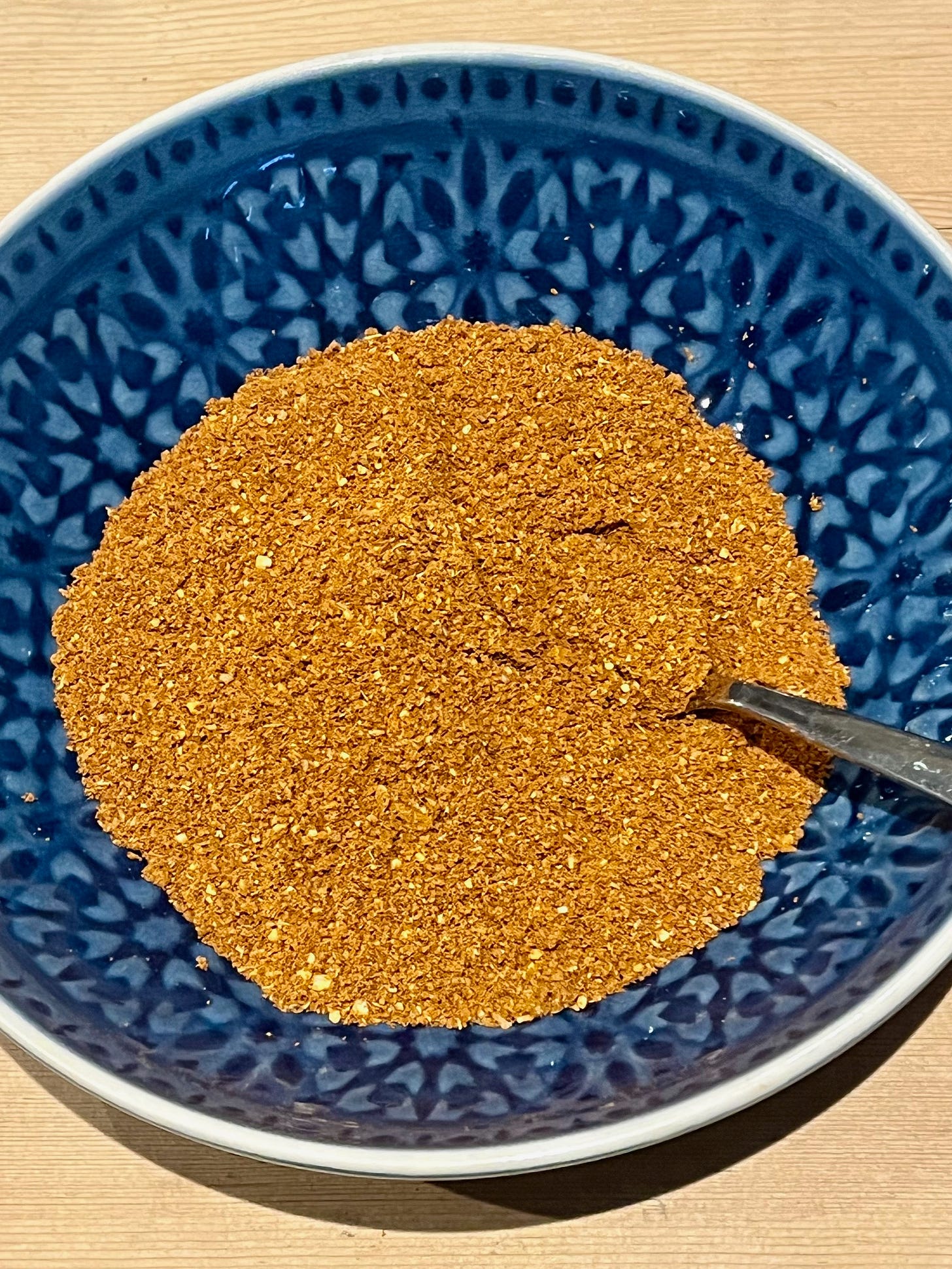
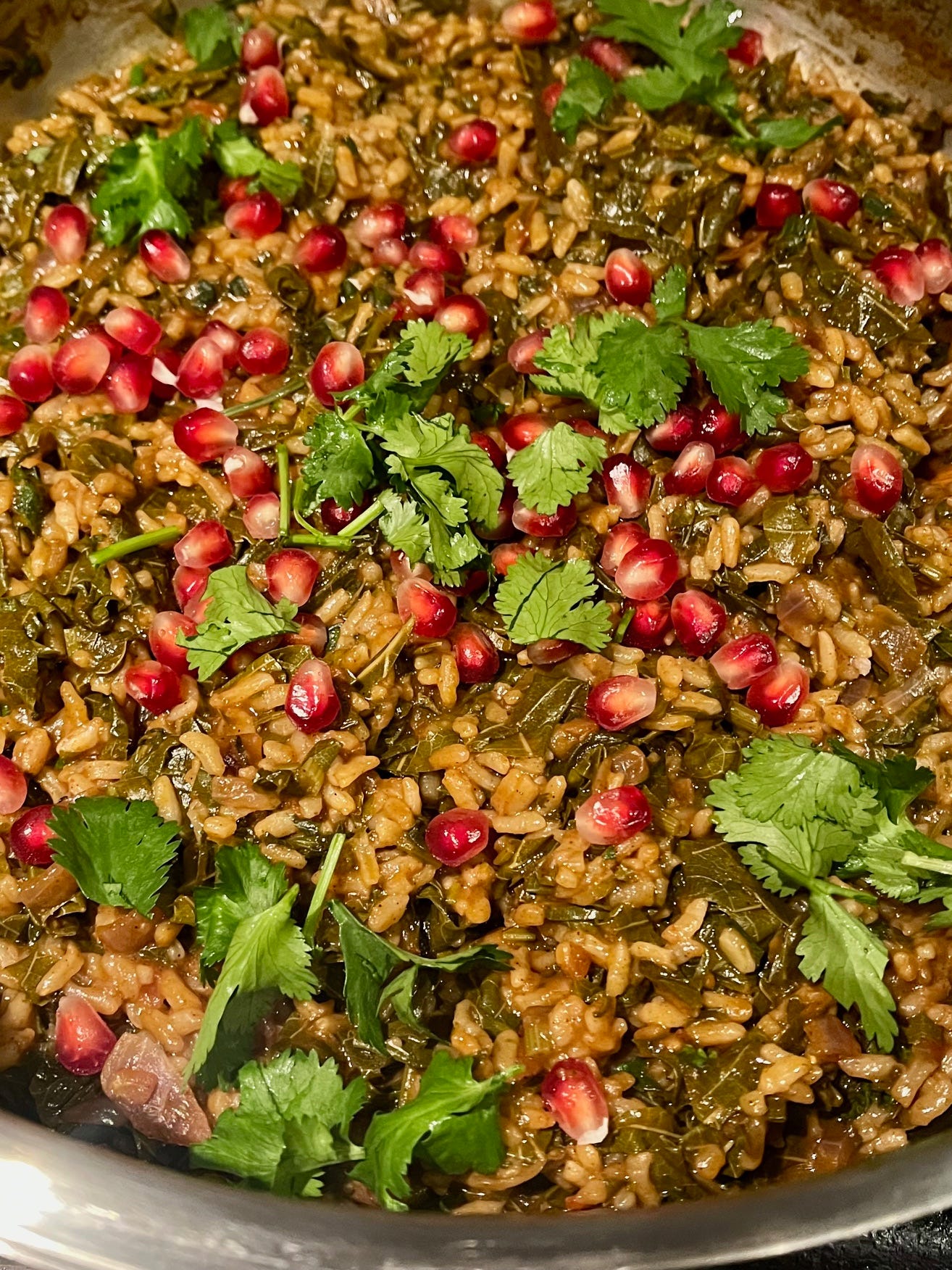
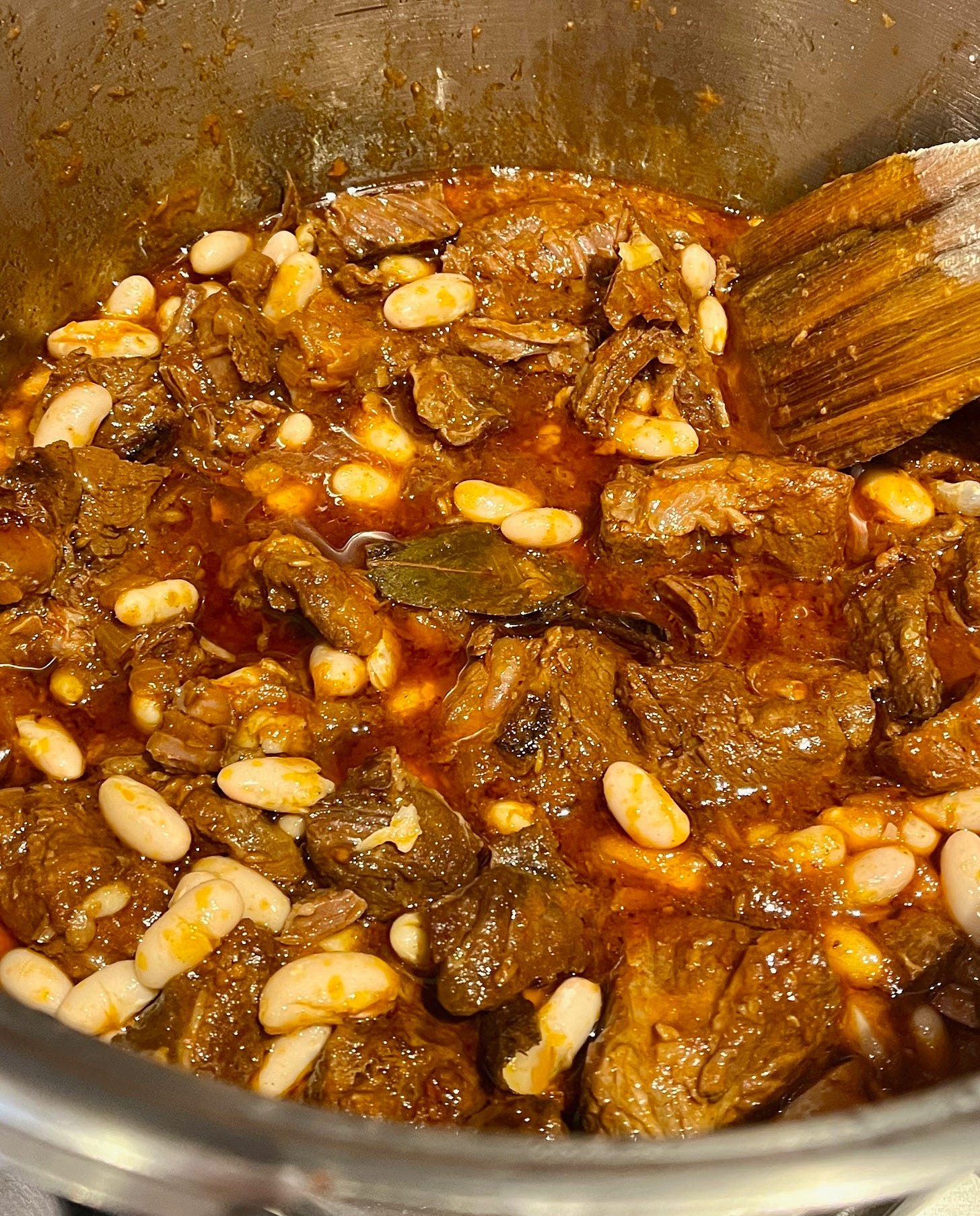
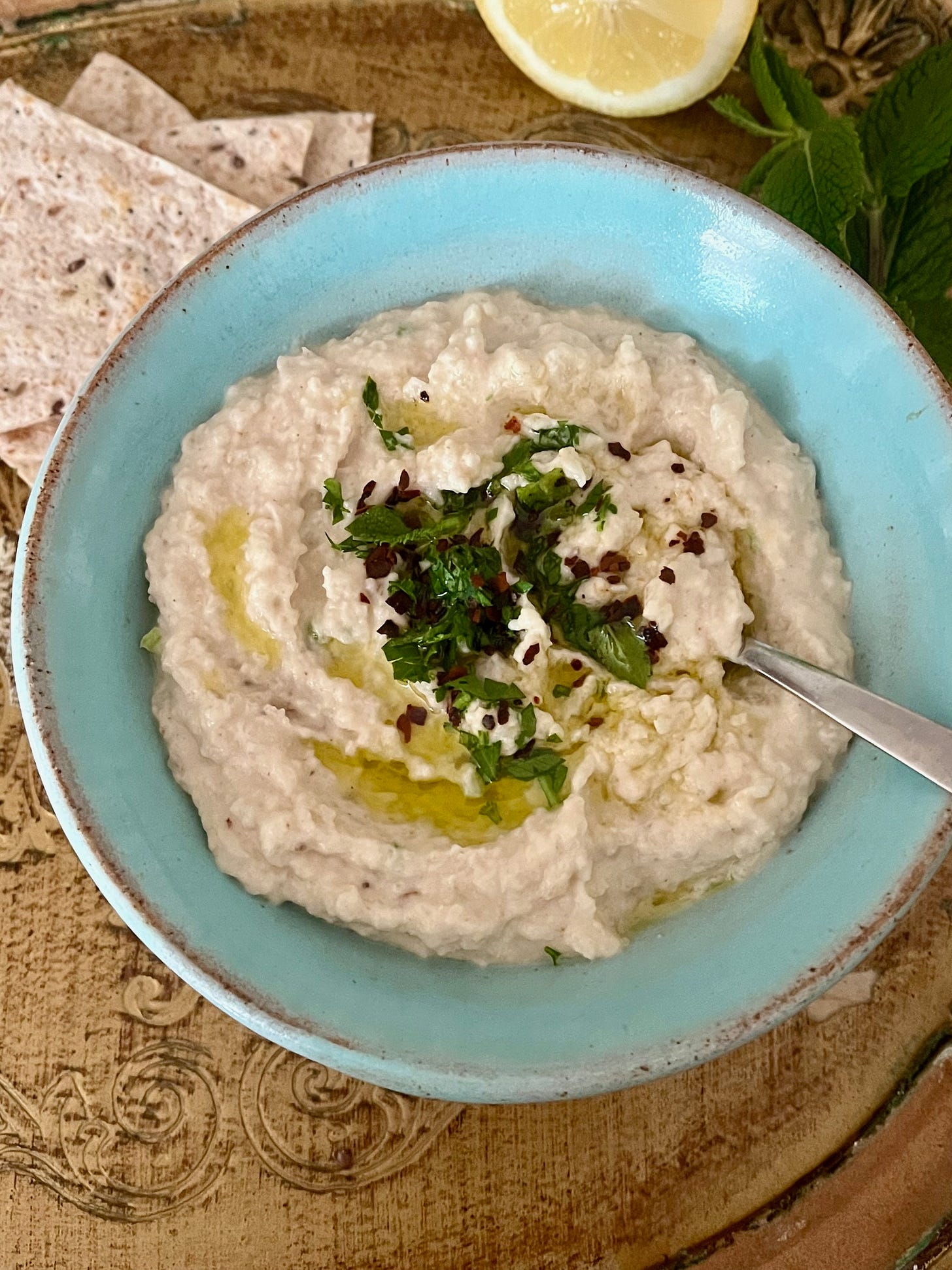
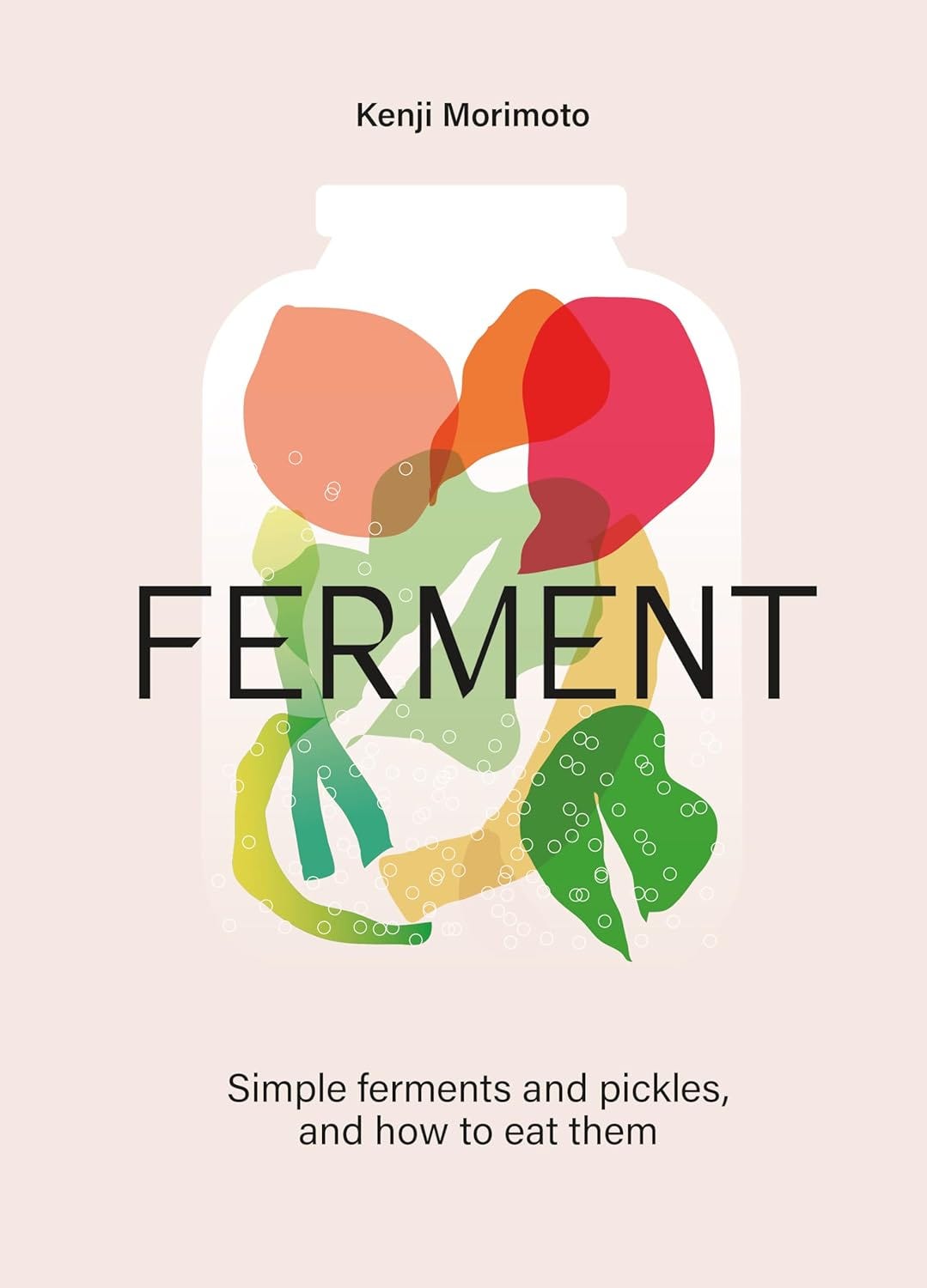
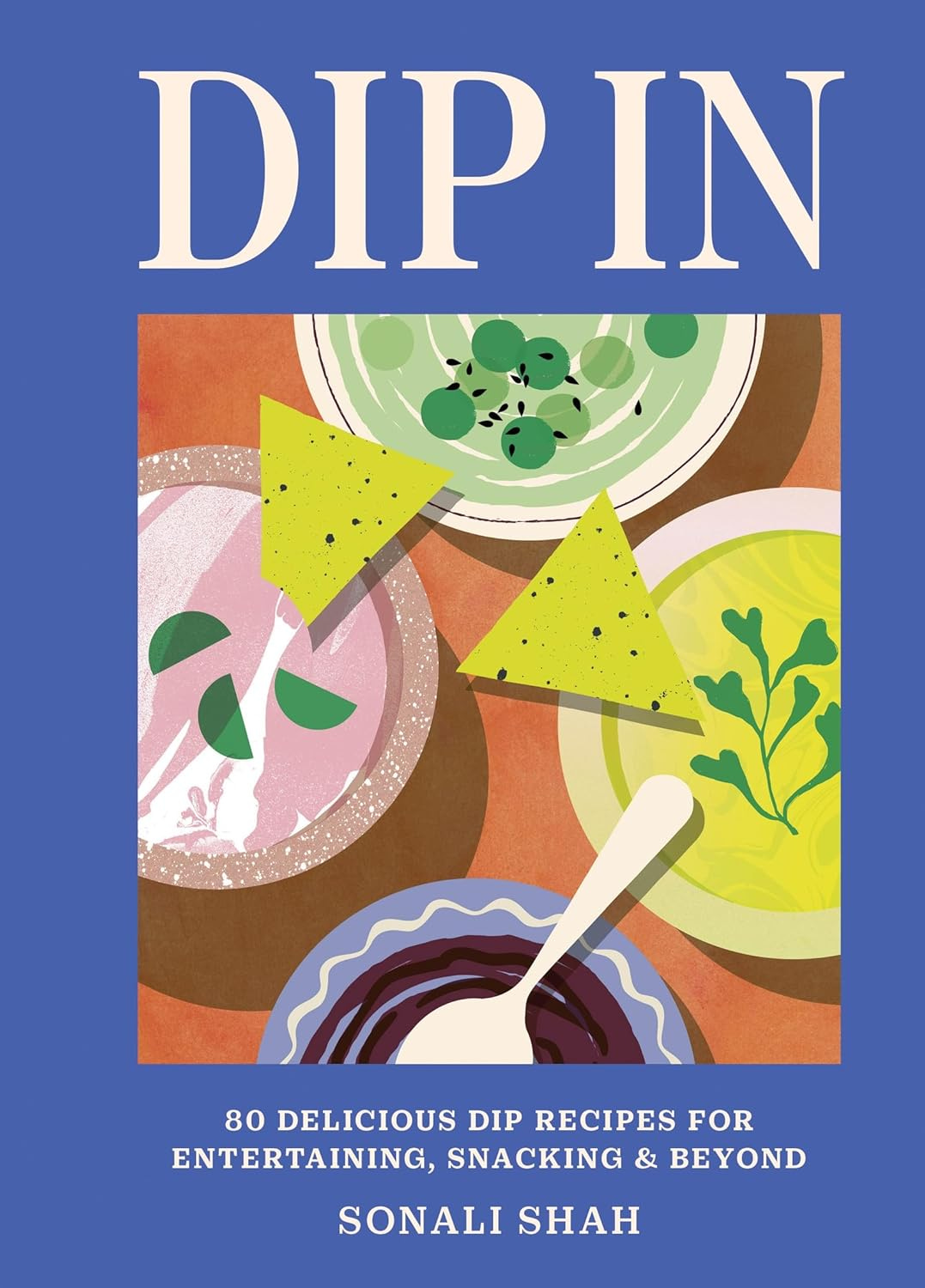
PS - I meant to say, but pressed ‘SEND’ first, that ‘Gaza Kitchen’ also contains a lot of writing about the (pre-2023) difficulties of managing producing food, and of cooking it; and fascinating interviews with local home-cooks, street-food cooks, farmers, fishermen, etc.k which are quite heart-rending, and anger-inducing, enough, without thinking of how infinitely worse everything is now.
Brilliant. Thanks as always.